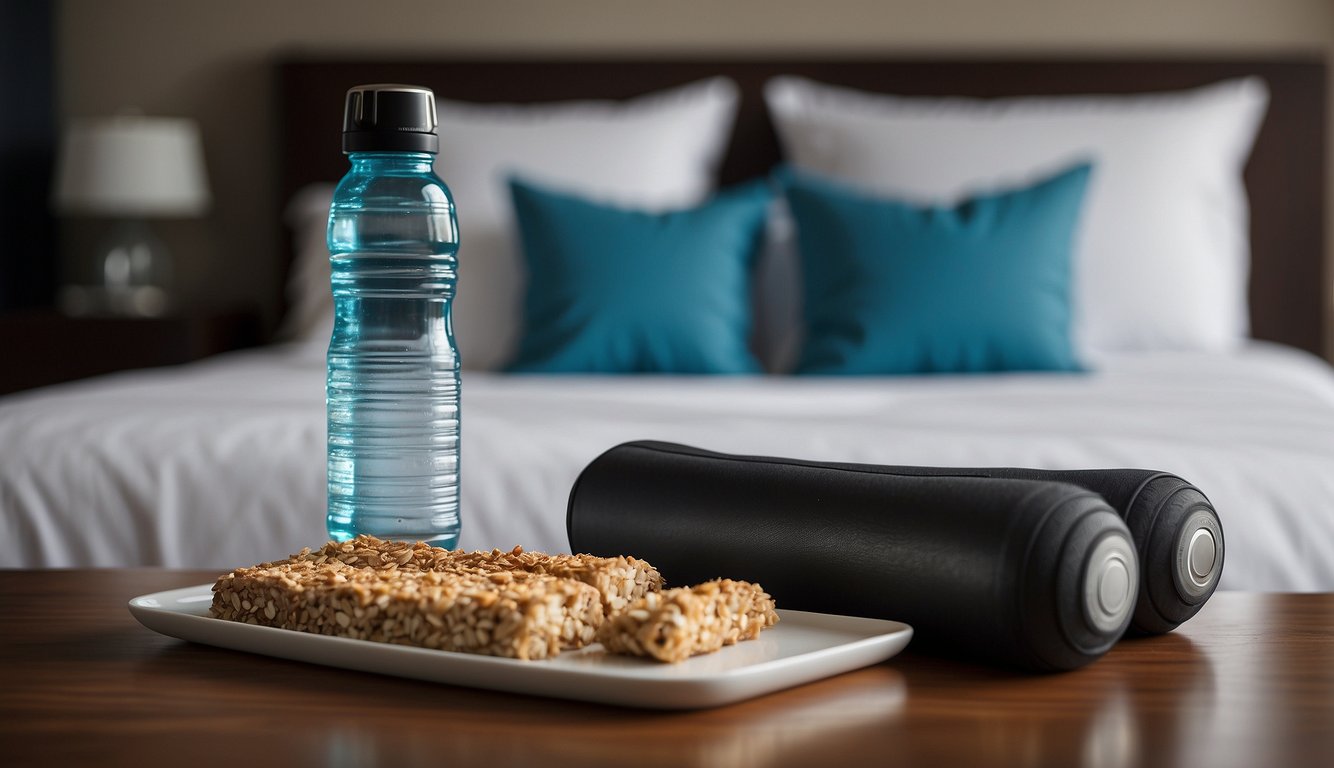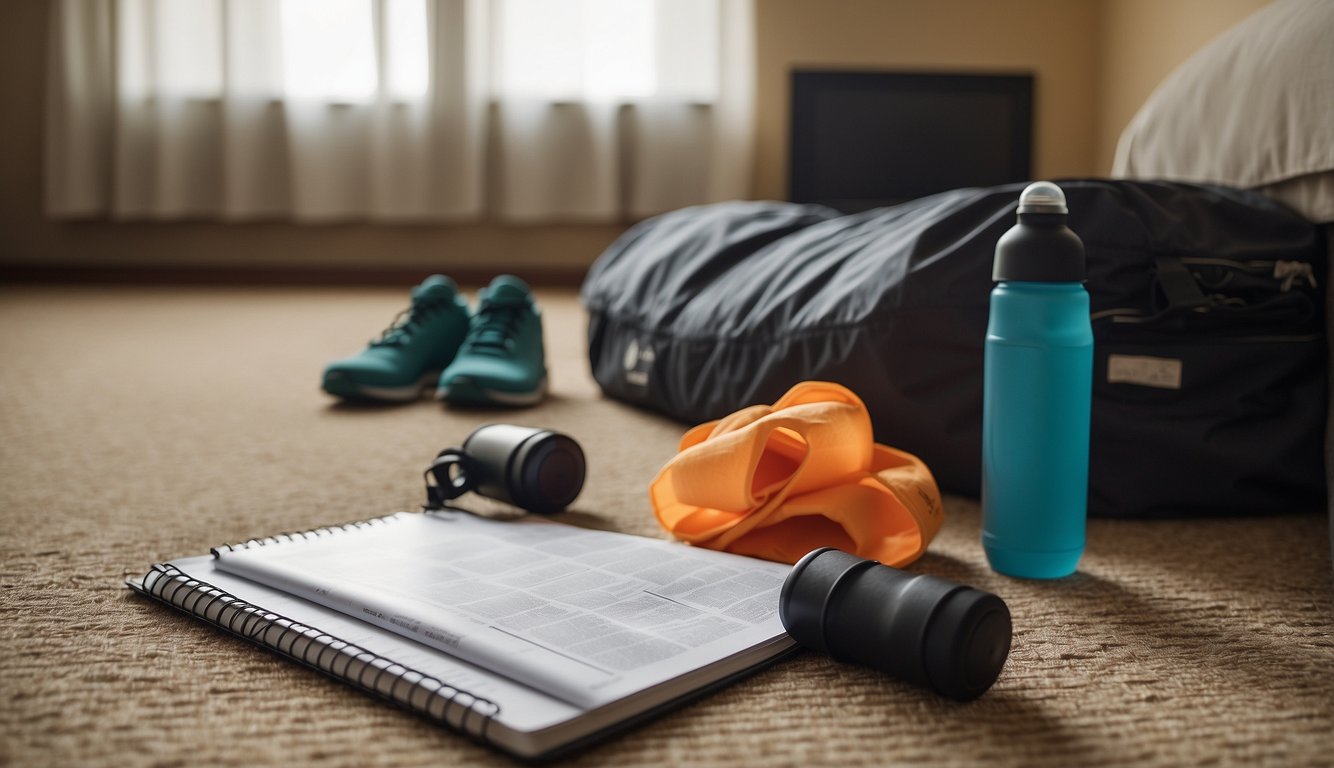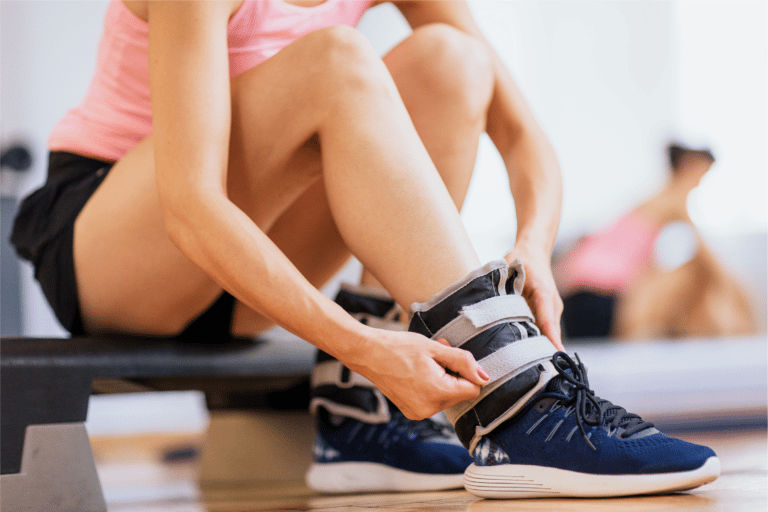Strategies for Post-Run Recovery During Travel: Maximizing Downtime and Performance
Traveling for races or training in different locales is an exciting part of being a runner, but it can also pose challenges for post-run recovery. Maintaining a recovery routine is critical to sustaining health and performance, especially when away from the comforts of home. As a UESCA certified running coach, I’ve learned that recovery should be as much a part of your travel plans as the run itself.
I always advise athletes to prioritize hydration, especially after a run and before boarding a plane, where the air is notably dry. It’s crucial to replenish fluids lost during a run to aid muscle recovery and function. Additionally, bringing along portable recovery tools, such as a foam roller or resistance bands, allows for muscle relaxation and stretching even when you’re limited on space.
Focusing on refueling with nutritious food post-run is just as important while traveling. Consuming a meal or snack with a balance of protein and carbohydrates helps repair and rebuild muscles. I often recommend planning your meals ahead or researching nearby food options to ensure your body receives what it needs for a swift recovery.

Planning Your Recovery Strategy
Effective post-run recovery during travel hinges on two key components: proactively scheduling downtime and ensuring proper hydration and nutrition. These areas require careful planning to maintain peak performance and support your body’s recovery processes.
Scheduling Downtime and Rest
I know firsthand the significance of rest in a runner’s recovery plan. After a run, the body needs time to repair muscles and replenish glycogen stores. While traveling, it’s vital to schedule rest periods into your itinerary. This means:
- Selecting Accommodations: Choose a place to stay where you can get quality sleep—an essential aspect of recovery, ensuring at least 7-9 hours each night.
- Setting a Sleep Routine: Maintain regular sleeping hours to regulate your body’s internal clock, which enhances recovery.
Hydration and Nutrition Planning
During my travels, maintaining a focus on hydration and nutrition is crucial for recovery. A structured plan helps to restore energy and support muscle repair.
Here’s a quick guide:
Hydration Strategy:
To ensure adequate hydration, I follow a structured water intake plan along with electrolyte replenishment, especially after physical activities like running.
- Post-run:
- Water Intake: 16-20 oz
- Electrolyte-Rich Drink: Sports drink or coconut water
- Evening:
- Water Intake: 24 oz
- Electrolyte-Rich Drink: Herbal tea or water
- Throughout the Day:
- Water Intake: Aim for the remainder of the 2-3 liters target
- Electrolyte-Rich Drink: Water or electrolyte-infused water
Nutrition Focus:
My post-run meals are designed to refuel energy stores and facilitate muscle repair, with an emphasis on carbohydrates and a good mix of proteins.
- Breakfast:
- Carbohydrates: Oatmeal, fruits
- Protein: Greek yogurt, eggs
- Remarks: Easy on digestion, provides a gentle start for the day.
- Lunch:
- Carbohydrates: Sandwich, quinoa salad
- Protein: Chicken, tuna
- Remarks: Balanced and filling, to sustain energy through the afternoon.
- Dinner:
- Carbohydrates: Sweet potatoes, brown rice
- Protein: Salmon, tofu
- Remarks: Denser, nutrient-rich options for recovery and satiety.
Quick Post-Run Snacks:
For an immediate post-run recovery snack, I opt for:
- A smoothie or chocolate milk, which provides a quick and nourishing combination of carbohydrates and protein.

Active Recovery Techniques
Active recovery plays a crucial role in post-run recuperation, particularly during travel when space and equipment may be limited.
It involves engaging in low to moderate-intensity activities to stimulate blood flow, aiding in muscle recovery and reducing soreness. Focusing on mobility and gentle muscle engagement, active recovery can hasten the return to optimal performance.
Low-Intensity Workouts
For active recovery, my top recommendation is incorporating low-intensity workouts such as walking or cycling. These activities increase circulation without overstressing the muscles.
A brisk 20-minute walk or a gentle 10-minute cycling session can effectively facilitate recovery and maintain flexibility.
- Walking: Keep a comfortable pace to enhance blood flow and help alleviate muscle stiffness.
- Cycling: Opt for a relaxed, flat route to engage leg muscles lightly without excessive strain.
Stretching and Flexibility Routines
Yoga and dedicated stretching routines are excellent for enhancing flexibility and extending your range of motion. After running, when muscles are still warm, spend 5-10 minutes focusing on major muscle groups.
- Yoga: Engage in poses that target legs, back, and hips to support ligament and tendon health.
- Stretching: Perform dynamic stretches pre-run and static stretches post-run to prevent tightness.
Using Foam Rollers and Massage Tools
Foam rolling and the use of massage tools enable you to target specific muscles, ligaments, and tendons for self-myofascial release. This technique helps break up knots and promotes muscle fiber healing.
- Foam Rolling: Roll each major muscle group for about 30 seconds to improve flexibility and reduce soreness.
- Massage Tools: Handheld massagers or massage balls can pinpoint areas that may be difficult to reach with a foam roller.
By incorporating these active recovery techniques into your travel routine, you enhance your muscle recovery process, ensuring muscle soreness is minimized and your body is prepared for your next run.
Prevention and Management of Injuries

When traveling, managing and preventing injuries is critical to ensuring you can continue training without interruption. Emphasizing early detection of injury symptoms and effective inflammation control can save you from long-term setbacks.
Identifying Early Signs of Injury
I always recommend runners to be highly attuned to their body’s signals. Early identification of injury signs includes persistent or unusual muscle pain, joint stress, or discomfort that doesn’t resolve with typical rest. Recognizing these symptoms immediately can prevent the development of more serious issues. Here’s a quick reference:
- Muscle Soreness: Discomfort that fades within 48 hours is normal, but persistent pain may indicate injury.
- Swelling or Redness: Can signal inflammation or strain.
- Reduced Mobility: Difficulty with range of motion can be an early sign of injury.
- Change in Gait: Alterations in running form can result from compensating for pain or discomfort.
By being aware of these signs, runners can take prompt action to address potential injuries before they worsen.
Cold Therapy and Inflammation Reduction
To manage inflammation and aid in muscle repair, cold therapy is a technique I stand by. Applying ice packs or taking ice baths post-run can help constrict blood vessels, reducing blood flow to the injured area, and help mitigate inflammation. This practice can rejuvenate tired muscles and is especially effective after long runs or intense training sessions. For travelers, portable ice packs are a practical solution. Here’s a brief guide on using cold therapy:
| Duration | Method | Frequency |
|---|---|---|
| 15-20 min | Ice Pack Application | Every 2-3 hours post-injury |
| 10-15 min | Ice Baths | Once after a significant run |
Remember, while cold therapy aids in reducing inflammation, it should be used judiciously and not as a substitute for proper medical attention if an injury is serious. Regular use can support the muscle growth and repair process, aiding in quicker recovery times for stressed tissues.
Enhancing Recovery Through Restorative Sleep

When it comes to post-run recovery during travel, I prioritize restorative sleep to help athletes rejuvenate. Quality sleep plays a critical role in facilitating recovery, allowing the release of growth hormone essential for repairing muscles.
Key Aspects of Quality Sleep:
- Duration: 7-9 hours to replenish energy stores
- Consistency: Same wake-up and sleep times daily
- Environment: Dark, quiet, cool room to reduce stress and minimize disruptions
Strategies to Improve Sleep:
- Relaxation: Simple breathing exercises before bed to promote relaxation
- Nutrition: Avoiding heavy meals and caffeine close to bedtime to prevent sleep disturbances
To mitigate fatigue and optimize recovery, I focus on enhancing both sleep duration and quality. Athletes should aim to wind down with a consistent bedtime routine, even when on the road, to signal the body that it’s time to rest. A short meditation or reading session can aid in transitioning to sleep mode.
Sleep’s Role in Recovery:
- Stress Reduction: Lower stress levels for improved recovery
- Muscle Repair: Growth hormone released during deep sleep aids muscle repair
- Energy Recharge: Sleep replenishes energy stores for better performance
Checklist for Sleep Hygiene on the Road:
- Stick to a regular sleep schedule
- Create a restful environment in your hotel room
- Utilize relaxation techniques before bed
Remember, as a UESCA certified running coach, my goal is to help you sustain high performance through strategic rest and recovery. Ensuring you get restorative sleep is fundamental to your travel recovery protocol.
Recovery in Different Environments
When traveling for running events or training, it’s crucial to tailor your recovery strategies to the specific conditions you encounter. My focus will be on how to adjust to international travel and adapt to varying weather and altitude, which are pivotal in affecting your post-run recovery.
Adjusting to International Travel
International travel often leads to jet lag, which can throw off your sleep cycle and, in turn, affect recovery. The key is to gradually adjust your sleep schedule to the new time zone a few days before departure. Stay hydrated during flights, as the cabin’s low humidity can lead to dehydration, which exacerbates fatigue and muscle soreness. Upon arrival, a short, easy run can help acclimate your body and mind to the new environment.
- Pre-Travel: Gradually adjust sleep schedule
- During Flight: Increase water intake to prevent dehydration
- Post-Arrival: Short, easy runs to adjust
Tailoring Recovery to Weather and Altitude
Different environments present unique challenges for recovery. In hot and humid conditions, excessive sweating can lead to dehydration, so replenishing fluids becomes especially important. Remember that your heart rate and blood pressure may respond differently to the same exercise stress under varying environmental conditions.
High altitudes require special attention as the air is thinner and oxygen levels are lower. This can increase heart rate and induce a feeling of fatigue more quickly. To counter this, increase your intake of water and iron-rich foods, take more rest than usual, and incorporate low-intensity activities to help the body adjust to the oxygen scarcity.
| Environment | Challenge | Recovery Strategy |
|---|---|---|
| Hot/Humid | Increased sweating, dehydration | Increase fluid and electrolyte intake |
| High Altitude | Thinner air, higher heart rate | Gradual activity increase, more rest |
Dealing with international travel and diverse environmental conditions requires specific recovery strategies that prevent tension and facilitate adaptation. I aim to ensure that runners can maintain the quality of their training and recover effectively, no matter where their running takes them.






